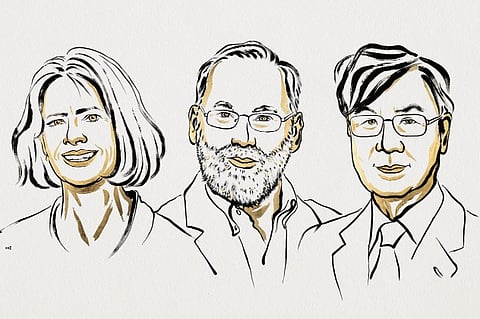

Two researchers from the United States (USA) and one from Japan have been awarded the Nobel Prize in Physiology or Medicine 2025 for their ground-breaking discoveries that helped us understand how the immune system keeps itself from harming the body.
The immune system selectively neutralises invading microbes without affecting our own tissues even as many microbes have developed similarities to human cells to evade detection. This raised questions in the minds of scientists on how the immune system keeps track of what is “self” and what is an “invader”.
The three researchers are Mary E Brunkow, Institute for Systems Biology, USA, Fred Ramsdell from Sonoma Biotherapeutics, USA, and Shimon Sakaguchi from Osaka University, Japan. The laureates identified that regulatory T cells are those which play a role in regulating or suppressing other cells in the immune system and thereby prevent immune cells from attacking our own body.
“Their discoveries have been decisive for our understanding of how the immune system functions and why we do not all develop serious autoimmune diseases,” Olle Kämpe, chair of the Nobel Assembly at Karolinska Institutet, said in a statement. Autoimmune diseases occur when the immune system attacks healthy cells in the body, instead of defending them.
In the 1990s, Sakaguchi identified a previously unknown class of immune cells, which protect the body from autoimmune diseases. These cells came to be known as ‘regulatory T cells’.
Then, in 2001, Brunkow and Ramsdell went a step further, offering an explanation as to why autoimmune diseases develop. They found that a specific mouse strain was particularly vulnerable to autoimmune diseases because it had a mutation in a gene named Foxp3. In this mouse strain, they noted, their immune cells were attacking their organs and destroying the tissues.
The human equivalent of this gene causes a serious autoimmune disease called Immunodeficiency, Polyendocrinopathy, and Enteropathy X-Linked Syndrome (IPEX) — a syndrome characterised by the development of multiple autoimmune disorders in affected individuals, typically affecting the intestines, skin, and hormone-producing (endocrine) glands.
Two years later, Shimon Sakaguchi followed up on the research, linking his discovery to that of the researchers in the USA. He proved that the Foxp3 gene governs the development of regulatory T cells. These cells, he found, made sure our immune system tolerates our own cells.
Regulatory T cells have another function: they calm or prevent the immune system from going into an overdrive after an invading microbe is eliminated.
The discoveries have also led to the development of potential medical treatments that are now being evaluated in clinical trials, according to the Nobel Committee.
For instance, these discoveries are helping find treatments for autoimmune diseases. In pilot studies, researchers are giving patients interleukin-2, a substance that makes regulatory T cells thrive. Interleukin-2 is also being studied for whether they can prevent organ rejection after transplantation.
Another potential treatment being tested involves slowing an overactive immune system by separating regulatory T cells from a patient and multiply them in a laboratory. These cells are then returned to the patient to increase the regulatory T cells in their body.
“The laureates’ discoveries launched the field of peripheral tolerance, spurring the development of medical treatments for cancer and autoimmune diseases. This may also lead to more successful transplantations. Several of these treatments are now undergoing clinical trials,” reads the press statement.